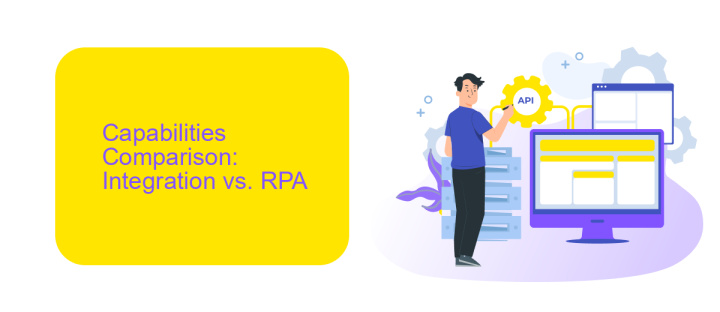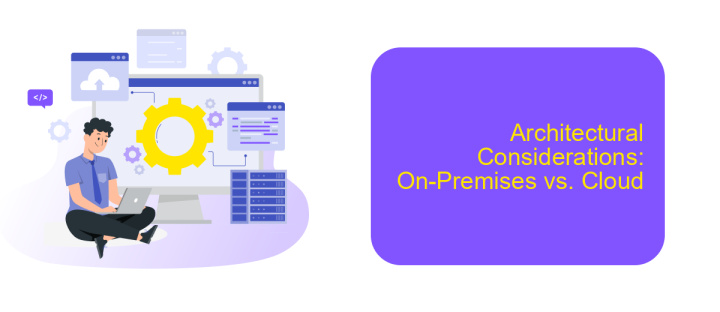MuleSoft Vs UiPath
In today's fast-paced digital landscape, businesses are constantly seeking tools to streamline operations and enhance productivity. MuleSoft and UiPath are two leading platforms that cater to these needs, albeit in different ways. This article delves into the core functionalities, use cases, and unique strengths of MuleSoft and UiPath, helping you make an informed decision on which solution best fits your organizational requirements.
Introduction: Understanding MuleSoft and UiPath
As businesses continue to evolve, the need for efficient automation and seamless integration becomes increasingly critical. MuleSoft and UiPath are two prominent platforms that cater to these needs, each offering unique capabilities and advantages.
- MuleSoft: Specializes in connecting applications, data, and devices with APIs, enabling businesses to create a network of applications.
- UiPath: Focuses on automating repetitive tasks through Robotic Process Automation (RPA), enhancing productivity and reducing manual effort.
While MuleSoft excels in API-led connectivity, UiPath shines in automating routine processes. For businesses seeking a comprehensive solution, integrating these platforms can be highly beneficial. Tools like ApiX-Drive further simplify this integration process by offering a seamless way to connect various applications and automate workflows, ensuring that businesses can leverage the strengths of both MuleSoft and UiPath effectively.
Capabilities Comparison: Integration vs. RPA

MuleSoft and UiPath serve distinct purposes in the realm of enterprise automation, each excelling in its own domain. MuleSoft specializes in integration, enabling seamless connectivity between disparate systems, applications, and data sources. By leveraging APIs, MuleSoft ensures that businesses can unify their IT environment, facilitating smooth data flow and real-time information exchange. Tools like ApiX-Drive further enhance these capabilities by providing user-friendly interfaces for setting up integrations without extensive coding, making it easier for organizations to implement and manage their integration strategies.
On the other hand, UiPath focuses on Robotic Process Automation (RPA), streamlining repetitive tasks through the use of software robots. UiPath excels in automating rule-based processes, reducing manual effort and increasing operational efficiency. While MuleSoft connects systems, UiPath automates workflows within and across these systems. Both platforms offer complementary benefits: MuleSoft ensures integrated, cohesive IT landscapes, while UiPath drives efficiency by automating routine tasks, allowing employees to focus on more strategic activities.
Use Cases and Industry Applications

MuleSoft and UiPath are powerful tools that cater to different business needs across various industries. MuleSoft excels in integration and API management, making it ideal for companies looking to connect disparate systems and streamline data flows. On the other hand, UiPath specializes in robotic process automation (RPA), which is perfect for automating repetitive tasks and improving operational efficiency.
- Financial Services: MuleSoft can integrate banking systems for seamless data exchange, while UiPath can automate transaction processing and compliance checks.
- Healthcare: MuleSoft helps in integrating patient data from various sources, whereas UiPath can automate patient appointment scheduling and billing.
- Retail: MuleSoft supports omnichannel retail strategies by integrating e-commerce platforms, while UiPath automates inventory management and order processing.
- Manufacturing: MuleSoft can connect ERP systems with production lines, and UiPath automates quality control and supply chain operations.
For businesses looking to enhance their integration capabilities without extensive coding, services like ApiX-Drive offer a user-friendly platform to connect various apps and automate workflows. This can complement both MuleSoft's and UiPath's functionalities, providing a more comprehensive solution for diverse industry applications.
Architectural Considerations: On-Premises vs. Cloud

When considering the architectural aspects of MuleSoft and UiPath, it's essential to evaluate the deployment options: on-premises versus cloud. The choice between these can significantly impact scalability, maintenance, and cost.
On-premises solutions provide greater control over data and infrastructure, which can be crucial for organizations with stringent security requirements. However, they often require substantial upfront investment in hardware and ongoing maintenance costs.
- Scalability: Cloud solutions offer greater flexibility to scale resources up or down based on demand.
- Maintenance: Cloud providers handle maintenance, reducing the burden on internal IT teams.
- Cost: Cloud deployments often follow a subscription model, which can be more cost-effective in the long run.
- Integration: Tools like ApiX-Drive can simplify the integration process, whether on-premises or cloud-based, by providing seamless connectivity between various applications.
Ultimately, the decision between on-premises and cloud should align with the organization's specific needs and goals. By leveraging tools like ApiX-Drive, businesses can ensure smooth integration processes, regardless of the chosen deployment model.
Future Outlook: Innovation and Trends
As we look to the future, both MuleSoft and UiPath are poised to drive significant innovation in their respective fields. MuleSoft continues to evolve its Anypoint Platform, focusing on enhancing API management and integration capabilities. This includes leveraging AI and machine learning to optimize data flow and streamline processes. Tools like ApiX-Drive are becoming increasingly important, offering seamless integration solutions that simplify the connection of various applications and services, thus complementing MuleSoft's strengths.
On the other hand, UiPath is advancing its robotic process automation (RPA) technology by incorporating more intelligent automation features. The future trends for UiPath include expanding its AI-driven capabilities and integrating more deeply with other enterprise systems to create a cohesive automation ecosystem. As businesses seek to automate complex workflows, the demand for robust RPA solutions like UiPath is expected to grow, driven by the need for efficiency and scalability. Both platforms are set to play crucial roles in the digital transformation journeys of organizations worldwide.
- Automate the work of an online store or landing
- Empower through integration
- Don't spend money on programmers and integrators
- Save time by automating routine tasks
FAQ
What are the primary use cases for MuleSoft and UiPath?
How do MuleSoft and UiPath differ in terms of technology stack?
Can MuleSoft and UiPath be used together?
Which tool is better for automating repetitive tasks?
What should a business consider when choosing between MuleSoft and UiPath for automation and integration?
Do you want to achieve your goals in business, career and life faster and better? Do it with ApiX-Drive – a tool that will remove a significant part of the routine from workflows and free up additional time to achieve your goals. Test the capabilities of Apix-Drive for free – see for yourself the effectiveness of the tool.


